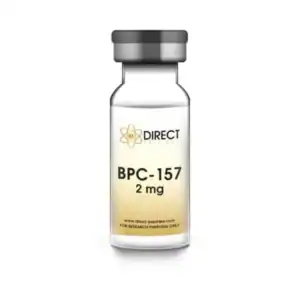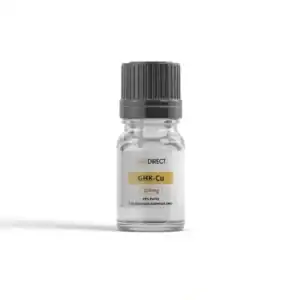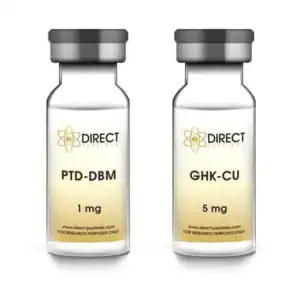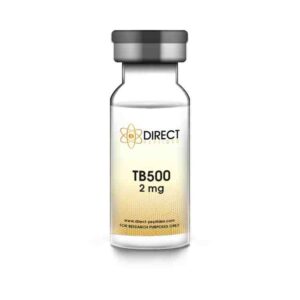Peptides such as TB500, BPC-157, GHK-Cu, and PTD-DBM are showing great promise in soft tissue injury research as key players in the healing process. These molecules work through their unique mechanisms to speed up healing, reduce inflammation, and promote tissue regeneration.
TB500, a synthetic peptide, has gained attention in sports medicine. It mimics Thymosin Beta 4, a natural peptide found in nearly all human and animal cells, which plays an important role in tissue repair. This innovative solution offers the potential to speed up recovery, reduce inflammation, and improve overall tissue healing.
Soft tissue injuries, including damage to muscles, tendons, and ligaments, often cause pain, swelling, and reduced mobility. They range from minor sprains and strains to more serious issues like a torn rotator cuff or Achilles tendonitis. Peptides like TB500 are opening new doors for treatment, providing hope for faster and more effective recovery.
TB-500, or Thymosin Beta 4 acetate, is a man-made version of Thymosin Beta 4 (TB4), a peptide found in nearly all human and animal cells. Its small size and unique structure let it move easily through tissues.
Studies show that TB-500 can help heal injuries, promote cell growth, and lower inflammation. It’s especially useful for soft tissue recovery, helping injuries heal faster and cutting down recovery time.
TB-500’s story began in the 1960s when researchers, led by Goldstein AL, discovered a protein called Thymosin in the thymus gland. Later, they identified different parts of Thymosin, including Thymosin Beta 4 (TB4), the natural form of TB-500.
TB4 was found to be important for tissue repair and healing. Based on this finding, scientists created TB-500, a synthetic version made to use TB4’s healing powers. This breakthrough was a big step in regenerative medicine, opening new doors for treating soft tissue injuries.
TB500 demonstrates great potential in addressing soft tissue injuries. Its healing properties are linked to its ability to upregulate cell-building proteins, such as actin, which is a compound integral to cell structure and movement. Additionally, TB-500 is known to modulate the production of cytokines, proteins that play pivotal roles in cellular communication during immune responses.
This regulation of cytokines results in a decrease in inflammatory responses and promotion of healing in injured tissues. Furthermore, TB 500, a short bioactive peptide sequence, contributes to blood vessel formation, a process known as angiogenesis, critical for nourishing and rejuvenating damaged tissues.
Buy TB500 from Direct Peptides Croatia online today!
 BPC-157 (Body Protection Compound 157) is a synthetic peptide based on a protein found in human gastric juice. It’s known for its ability to speed up tissue repair and support healing in multiple tissue types, reduce inflammation, and promote the formation of new blood vessels.
BPC-157 (Body Protection Compound 157) is a synthetic peptide based on a protein found in human gastric juice. It’s known for its ability to speed up tissue repair and support healing in multiple tissue types, reduce inflammation, and promote the formation of new blood vessels.
This peptide supports healing in tendons and ligaments, improves gut health, and may protect against oxidative stress caused by injuries.
How It Works:
For more information, visit BPC-157 category page.
GHK-Cu is a natural copper peptide complex that helps with tissue repair, skin regeneration, and reducing inflammation. It’s particularly effective for soft tissue injuries due to its ability to regulate genes involved in tissue remodeling.
How It Works:
For more information, visit GHK-Cu category page.
PTD-DBM (Protein Transduction Domain-DNA Binding Molecule) is a cutting-edge peptide that enhances the repair of damaged tissues. Although still experimental, it shows promise in tendon and ligament healing thanks to its ability to penetrate cells effectively.
How It Works:
For more information, visit PTD-DBM category page.
Shop Peptide Supplies from Direct Peptides Croatia for all your reconstitution requirements.
TB500 has shown potential in aiding the healing of soft tissue injuries, including muscle damage, as supported by various scientific studies. Croatia Research published in the Journal of Wound Care found that TB500 significantly improved the healing rate of acute wounds in a double-blind trial 1.
Similarly, a study in Frontiers in Pharmacology highlighted TB500’s actin-binding properties, which help with cell migration, angiogenesis, and blood vessel formation, speeding up the healing process .
Another study in Endocrinology showed that TB500 can reduce inflammation in injured tissues—key for lowering pain and promoting recovery . While these findings are promising, more research is needed to confirm the benefits and safety of TB500 for treating soft tissue injuries.
TB500 offers several key benefits compared to traditional treatments for soft tissue injuries.
First, it promotes healing at the cellular level, addressing the root cause of the injury, unlike traditional treatments like anti-inflammatory medications and painkillers that mainly manage symptoms. Second, TB500 supports angiogenesis, which improves blood flow to the injured area and enhances the supply of nutrients and oxygen, speeding up recovery.
This is especially helpful for injuries in areas with low blood supply, such as tendons. Third, TB500 has anti-inflammatory properties that can reduce pain and swelling without the side effects commonly associated with non-steroidal anti-inflammatory drugs (NSAIDs)
Other peptides, such as BPC-157 and GHK-Cu, also aid soft tissue repair but work in different ways, expanding treatment options. For example, BPC-157 supports collagen synthesis, while GHK-Cu helps reduce oxidative damage. While TB500 has promising benefits, there are some potential downsides. It may not work for everyone and could cause side effects like fatigue, headaches, or nausea. Additionally, TB500 is still considered experimental in many countries, which may limit its availability and mean it is not covered by insurance. Long-term effects are also not fully understood. Lastly, the quality and source of TB500 are crucial, as impurities can affect its safety and effectiveness. Real-life stories highlight the effectiveness of TB500, like a professional athlete recovering from a serious Achilles tendon injury. Traditional treatments, such as physiotherapy and anti-inflammatory medications, offered little relief for conditions like chronic pain and joint issues, including rheumatoid arthritis. After starting TB500, the athlete reported noticeable improvements in pain and mobility within just a few weeks 4. TB-500 shows great potential as a treatment for soft tissue injuries. Backed by science, it supports cell migration, angiogenesis, and blood vessel formation, while also reducing inflammation. These properties make it a promising option, either as an alternative or complement to traditional treatments. Case studies highlight its benefits, including faster healing, less pain, and better mobility after TB-500 therapy. While current research and anecdotal evidence are encouraging, more studies are needed to fully understand TB-500’s potential. This includes its effects on cognitive function, weight loss, and its overall mechanisms, long-term effects, and possible side effects. Further research will help unlock its full potential, ensuring it becomes a safe and effective treatment for soft tissue injuries. 1 Malinda KM, Sidhu GS, Mani H, Banaudha K, Maheshwari RK, Goldstein AL, Kleinman HK. Thymosin beta4 accelerates wound healing. J Invest Dermatol. 1999 Sep;113(3):364-8. 2 Maar K, Hetenyi R, Maar S, Faskerti G, Hanna D, Lippai B, Takatsy A, Bock-Marquette I. Utilizing Developmentally Essential Secreted Peptides Such as Thymosin Beta-4 to Remind the Adult Organs of Their Embryonic State-New Directions in Anti-Aging Regenerative Therapies. Cells. 2021 May 28;10(6):1343. 3 Xiong Y, Mahmood A, Meng Y, Zhang Y, Zhang ZG, Morris DC, Chopp M. Neuroprotective and neurorestorative effects of thymosin β4 treatment following experimental traumatic brain injury. Ann N Y Acad Sci. 2012 Oct;1270:51-8. 4 Lemme NJ, Li NY, DeFroda SF, Kleiner J, Owens BD. Epidemiology of Achilles Tendon Ruptures in the United States: Athletic and Nonathletic Injuries From 2012 to 2016. Orthop J Sports Med. 2018 Nov 26;6(11):2325967118808238. Shop ALL Research Grade Peptides online today from Direct Peptides Croatia, our comprehensive peptide list guarantees +99% Purity. TWIN PACKS BPC-157 Peptide Vial GHK-Cu (Topical) PTD-DBM GHK-Cu Peptide Stack BULK BUY BULK BUY BULK BUY TB500 Peptide VialPotential Drawbacks of TB500
Case Studies & Testimonials
Real-life Example of Individuals Benefiting from TB500
Further Research
Recap of the Potential of TB-500 in Treating Soft Tissue Injuries
Encouragement for More Research to Explore TB500’s Potential
References




ALL CONTENT AND PRODUCT INFORMATION AVAILABLE ON THIS WEBSITE IS FOR EDUCATIONAL PURPOSES ONLY.
DISCLAIMER: These products are intended solely as a research chemical only. This classification allows for their use only for research development and laboratory studies. The information available on our Croatia Direct Peptides website: https://direct-peptides.com is provided for educational purposes only. These products are not for human or animal use or consumption in any manner. Handling of these products should be limited to suitably qualified professionals. They are not to be classified as a drug, food, cosmetic, or medicinal product and must not be mislabelled or used as such.